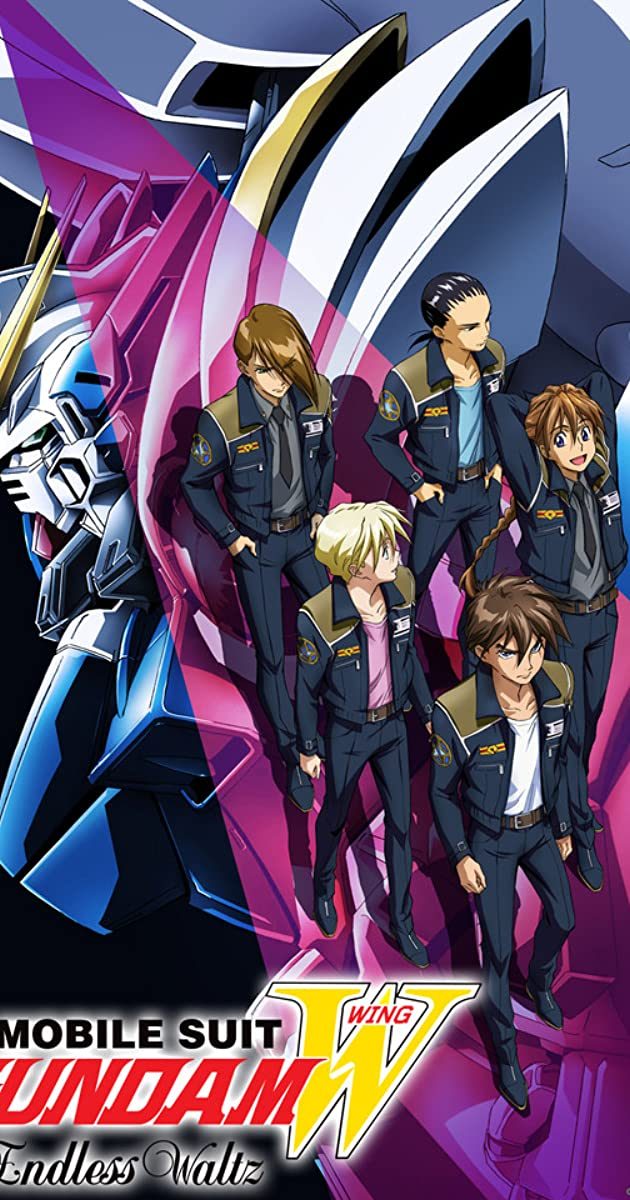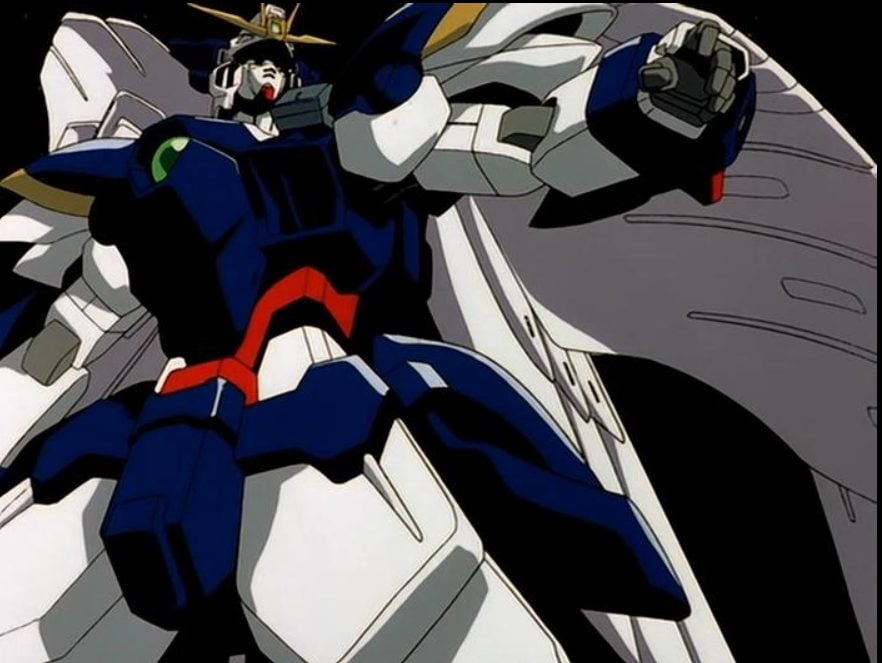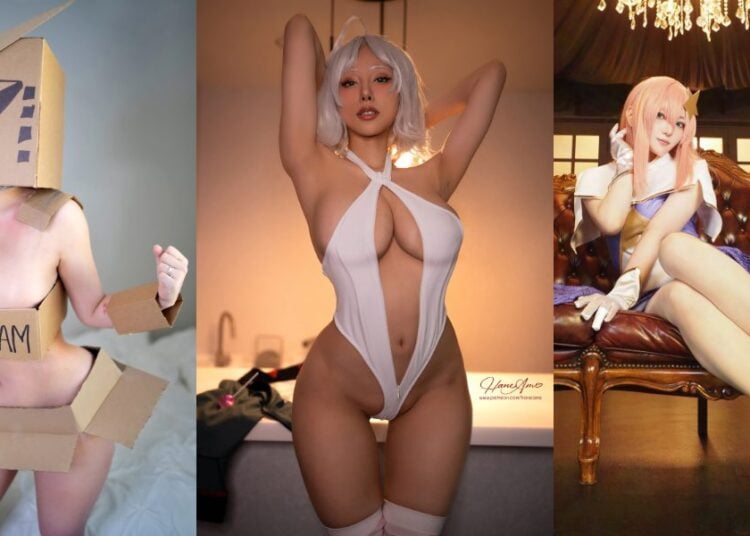Gundam Wing: Endless Waltz (1997) was produced by Sunrise as an OVA miniseries continuing from where the TV show New Mobile Report Gundam Wing (1995-96) ended. Many anime fans who came of age in the ‘90s would have undoubtedly heard or seen it, especially after the English dub aired on Cartoon Network in 2000. There’s more to the OVA, though, than just fanservice.

With a total running time of 75 minutes, which was later recut into a 90-minute theatrical film, the three-episode OVA was directed by Yasunao Aoki, with Kow Otani composing the soundtrack. It’s tempting nowadays to view the OVA from the vantage point of nostalgia, both for good and ill. Apart from the debates among fans, much has been said about its grandstanding about peace and how, like the series itself, it introduced female fans in droves to the long-running saga. Love it or hate, this entry has held up well. Much like Mobile Suit Gundam 0080: War in the Pocket (1989), it would mark a number of firsts while also being a solid work in its own right.
Peace in Our Time

Endless Waltz is set about a year after the events of the series, in After Colony 196. After much hardship, mankind now lives free of conflict under the Earth Sphere Unified Nation, yet actually keeping that hard-earned victory has proven to be trickier than Relena Darlian/Peacecraft (Akiko Yajima, Lisa Ann Beley) expected. Things come to a head when, during a conference with the space colonists, she’s kidnapped by an army loyal to Marimeia Kushrenada (Rei Sakuma, Maggie Blue O’Hara), the young daughter of the infamous Treize himself and heiress to the Barton Foundation. Meanwhile, the Gundam Pilots who had played such a pivotal role in winning the peace try to move on with their lives with varying degrees of success, only to be dragged into the midst of the conspiracy. What ensues is a race to stop Marimeia and her grandfather, Dekim Barton (Eisuke Yoda, Michael Dobson), from fulfilling their true goal, which involves the original Operation Meteor.
The OVA, even more so in its theatrical form, makes a conscious effort to not simply be epilogue filler, though it does have a similar coincidental Christmas backdrop like 0080. For instance, the truth behind Operation Meteor, which had been such a recurring plot point, is laid out in full, along with why Heero Yuy (Hikaru Midorikawa, Mark Hildreth) and his friends are so keen to stop it, once and for all. Even with the overbearing motif of pacifism, delivered alongside a dash of melodrama (both carried over from the TV show), it’s shown how difficult peace is to uphold. That the government, in the name of stopping war, has to rely on an armed agency called the Preventers to keep conflicts from breaking out is ironic. This focus on depth succeeds in conveying how the title itself relates to the cycle of violence and revenge, in addition to why the climactic battle being intentionally “bloodless” is meaningful. It helps as well that the story is presented such that one doesn’t need to have seen the original anime to appreciate it.
https://www.youtube.com/watch?v=X4eGsFnNOfQ
Snippet from the OVA, showing why Heero became the way he was, while also revealing the symbolism behind the intro sequence in the TV series. (Source: YouTube)
This is not to ignore how the cast is handled. Take Marimeia, who is, on the surface, very much like pre-Gundam Unicorn Mineva Lao Zabi, echoing Gundam Wing’s penchant for condensing elements from the Universal Century. Her characterization as both a brainwashed puppet of her grandfather and the fact that she is haunted by Treize’s legacy (whose presence lingers even well after his death) is nonetheless handled well. The returning characters, on the other hand, display considerable development while remaining recognizable. Granted, the survival of infamous Char Clone Zechs Merquise (Takehito Koyasu, Brian Drummond) as an ally to the heroes and Chang Wufei (Ryuuzou Ishino, Ted Cole) being revealed to be on the villains’ side might come off as contrived. Yet whether it’s Lady Une (Sayuri Yamauchi, Enuka Okuma) coming to terms with her split personality, Relena still struggling with the burden of her bloodline, or discovering the truth behind Heero’s nigh-suicidal tendencies, just about everyone is given their time to shine, and some closure.
An Explosive Crescendo
The plot and themes of Endless Waltz are conveyed with solid execution on par with, or exceeding, the original anime. While the Japanese dub certainly delivers, the English voice acting (especially for its time) comes off as a decent improvement, being more natural and fluid; the documentary-style narration done by Akio Ōtsuka and the late Campbell Lee more than make up for any shortcomings. The soundtrack, as in the series, is a memorable blend of techno, rock, and orchestral setpieces, with J-pop duo Two-Mix writing and performing the ending themes. Though it does make the audio dated at times, otherwise it holds up well, supporting the intrigue and carnage.
https://www.youtube.com/watch?v=vuz_IhEG-5k
The English-dubbed battle between Wufei and Heero, as well as the events that take place at the same time, do a good job of showcasing how the sights and sounds are a noticeable improvement over the anime. (Source: YouTube)
This leads to arguably the best and most notorious aspect of the OVA: the animation quality. It’s made pretty clear almost from the get-go that the Sunrise animators had more time and money on hand. While the art style remains consistent with the anime, with its peculiar blend of modern and retro styles, the detail on mechanical devices, clothing, and explosions alike are a significant step up from before. The Gundams, however, have been outright retconned, with additional weaponry and components that weren’t present in their TV show counterparts, without much in-universe explanation for the changes. This is partly due to merchandising reasons and how the mobile suits’ depiction in the series was, at times, inconsistent. Though this decision may irk those who preferred the earlier designs, and likely solidified the trend of later creators leaving their mark through retcons (as seen in 0080), the newer ones are still impressive. If that and the rest of the visuals count as fanservice, at the very least they’re the kind that have staying power.
All these go together to make for an excellent showing, especially for what’s effectively the first OVA to be made outside the Universal Century, and without Yoshiyuki Tomino’s input to boot. It’s not hard to see why Endless Waltz became such a hit in the West, or how it helped make the Gundam Wing’s continuity popular enough to have manga follow-ups, video game appearances, and the novel sequel Frozen Teardrop. That it helped in Gunpla model sales would be an extra bonus for Sunrise.
For good or ill, this film helped set the tone for what later works in the franchise would strive for.














